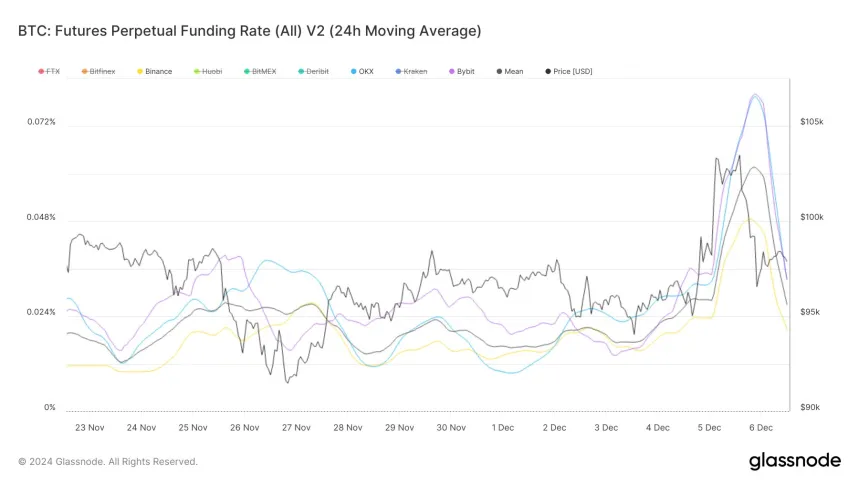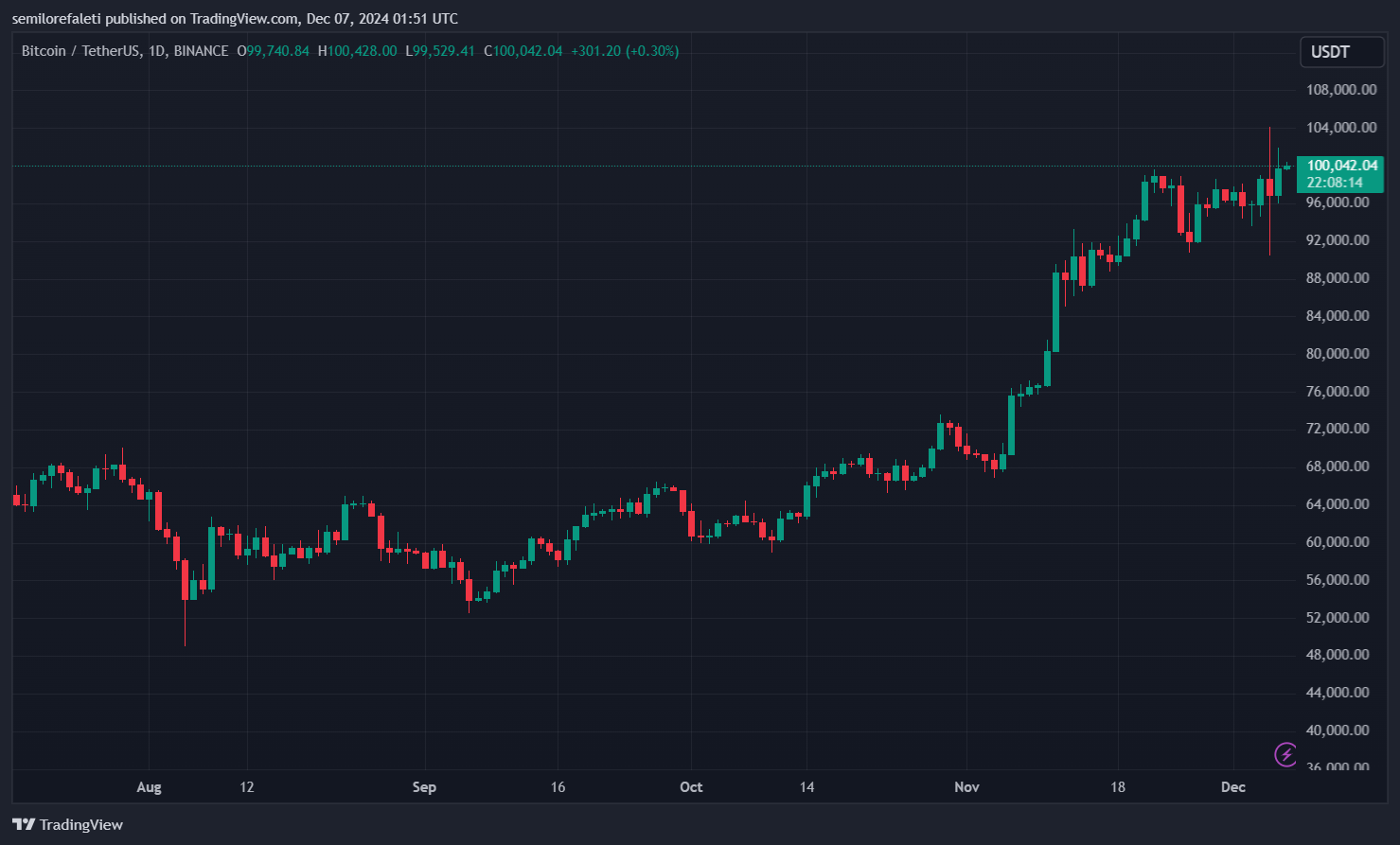Bitcoin Traders Maintain High Leverage Despite Funding Rate Decline
After reaching $100,000, Bitcoin experienced a price drop on Friday with an estimated loss of 7%. This decline affected the asset’s perpetual funding rates in derivative markets, although traders may still have enough leverage to impact price volatility significantly.
Bitcoin Short-Term Outlook Uncertain Due To Heightened Leverage
According to a post from Glassnode on December 6, Bitcoin's perpetual funding rate could greatly influence its short-term price. Perpetual funding rates are periodic payments between traders in the perpetual futures market that help align contract prices with the spot price of Bitcoin. Positive funding rates indicate long positions pay shorts, signaling bullish sentiment, while negative rates suggest the opposite.
Glassnode noted that BTC’s perpetual funding rates initially stabilized weekly amidst speculative demand. However, the surge to $100,000 saw these rates increase by 3.6 times their weekly average.

Bitcoin’s perpetual funding rate peaked at 0.062, the highest since April, suggesting significant influence from the derivative market on its rise above $100,000. Following the price drop, funding rates fell slightly above 0.024 but remain high compared to earlier in the week, indicating persistent leverage in the market.
This residual leverage suggests potential for increased price volatility. Consequently, Bitcoin's price movement is uncertain, as reversals could trigger substantial liquidations, leading to cascading effects.
STH Cost Basis Points To $112,000 Price Target
Analyst Ali Martinez has predicted Bitcoin's price based on the short-term holder (STH) cost basis, which reflects the average acquisition price for investors over the last 155 days. This metric indicates a break-even level for these holders.
Martinez's analysis suggests that Bitcoin could reach a local top of approximately $112,926, factoring in a +1 standard deviation to account for price volatility and behavioral trends. Currently, Bitcoin trades at $100,137 after facing rejection at $102,000 following its recovery from Friday’s crash. The asset's trading volume is down by 42.46%, now valued at $89.12 billion.
